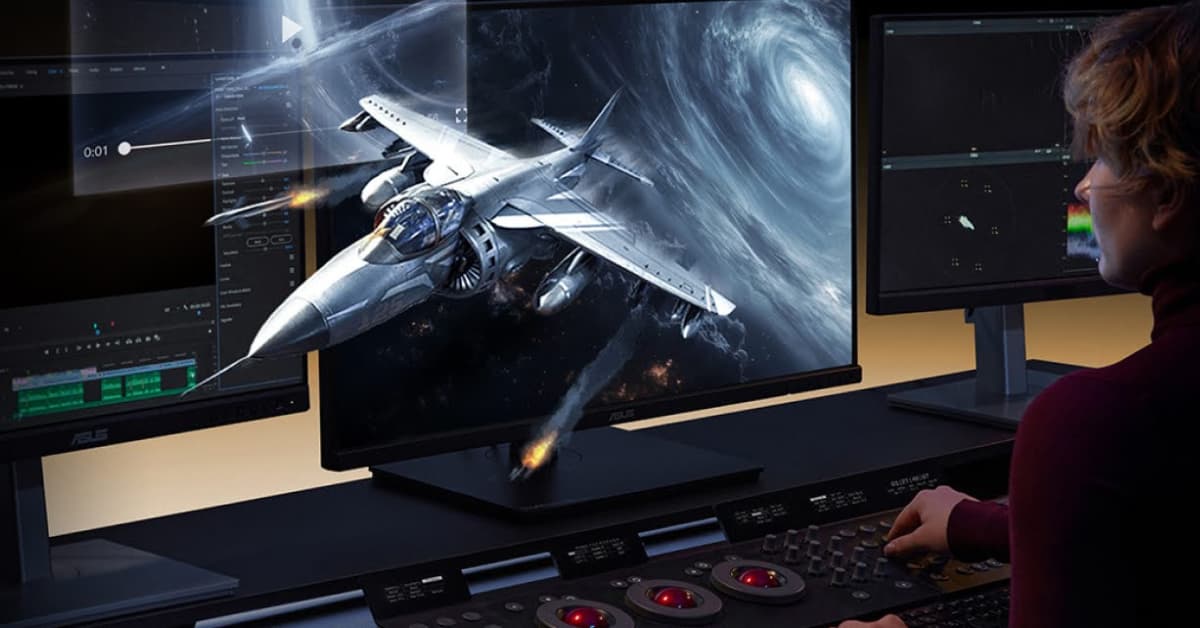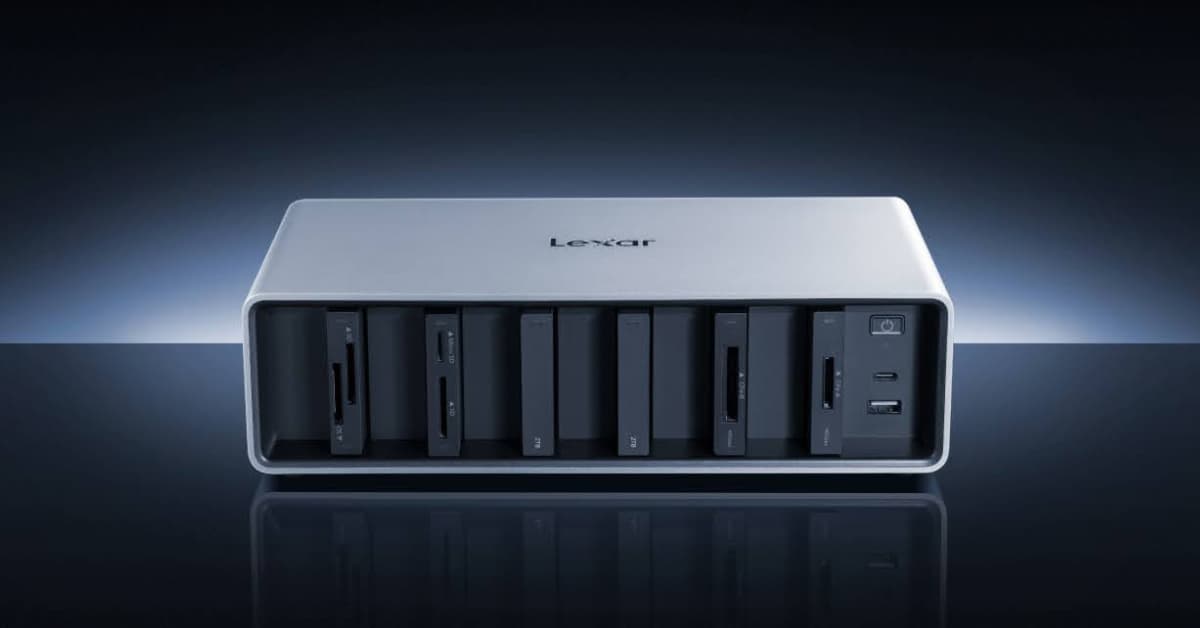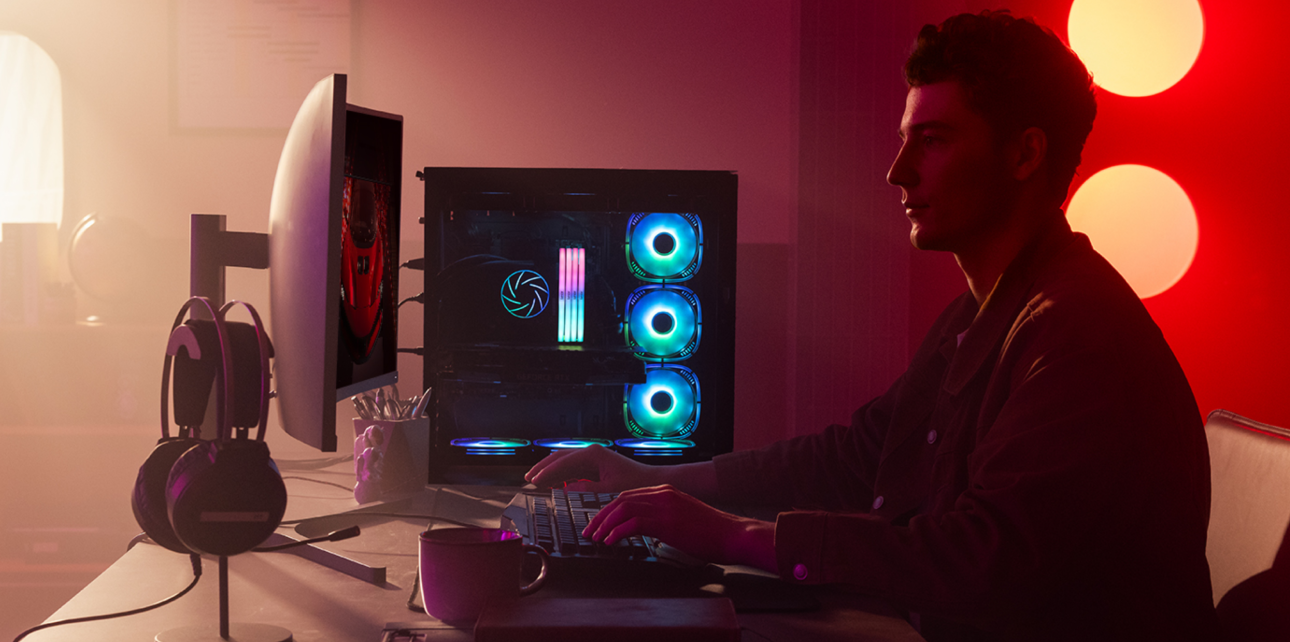
Ever wondered why your favorite game stutters when you have Discord and a browser open in the background? Or why upgrading your RAM seems to breathe new life into your aging gaming rig? Perhaps you’ve questioned whether faster RAM really makes a difference in gaming performance or how much RAM you truly need for the latest AAA titles. In the world of gaming hardware, RAM stands out as a critical yet often misunderstood component.
This guide will demystify gaming RAM, explaining not just what it is but why it’s the unsung hero of your gaming experience. From its role in multitasking while gaming to its impact on frame rates and load times, we’ll explore how RAM shapes your virtual adventures. Whether you’re a casual gamer, a competitive e-sports player, or a game developer, understanding gaming RAM is key to unlocking your system’s full potential.
Dive into the world of gaming RAM and get answers to the burning questions that every gamer should know.
The Basics: What is Gaming RAM and Why Does it Matter?
At its core, gaming RAM is no different from regular RAM – it’s still Random Access Memory. However, gaming RAM is optimized for the unique demands of modern games. It typically offers higher speeds and lower latencies, and often comes with stylish heat spreaders or RGB lighting to complement gaming rigs.
Think of gaming RAM as your PC’s short-term memory, specifically tuned for gaming tasks. When you’re exploring vast open worlds, engaging in intense firefights, or managing complex strategy games, your system constantly juggles massive amounts of data. That’s where gaming RAM shines.
The Battlefield Analogy
Imagine your gaming PC as a battlefield command center. Your CPU is the general, making rapid-fire decisions. Your GPU is the air force, handling visual reconnaissance and strikes. In this analogy, RAM is your ground troops – the more you have, and the faster they move, the more territory you can control simultaneously.
Just as more ground troops allow a military to control larger areas and respond to threats faster, more RAM enables your gaming PC to handle larger game worlds, more detailed textures, and smoother gameplay, especially when multitasking.
How Gaming RAM Works: The Speed Demon of Your Gaming Rig
The magic of gaming RAM lies in its ability to provide near-instantaneous data access. When your game needs to load a new area, render a complex scene, or process AI behaviors, it first checks RAM. If the data is there, it can be retrieved in nanoseconds, resulting in seamless gameplay.
Gaming RAM’s speed comes from its direct connection to the CPU via the memory bus. This high-speed highway allows for rapid data transfer, enabling smooth frame rates and quick load times.
The Technical Side
At its core, gaming RAM, like all RAM, consists of millions of transistors and capacitors arranged in a grid. Each intersection in this grid represents a bit of data. The RAM controller constantly refreshes these charges to maintain the data.
When your game needs to access specific data, it sends the RAM controller the exact address of that data. The controller then retrieves the information from that precise location, a process that happens billions of times per second.
MT/s vs MHz
You might notice RAM speeds listed in both MHz and MT/s (Megatransfers per second). While these numbers are often used interchangeably, they represent different measurements.
MHz refers to the actual clock frequency of the RAM, while MT/s indicates the data transfer rate—how many millions of data transfers occur per second.
In DDR (Double Data Rate) memory, the MT/s is typically double the MHz because data transfers occur twice per clock cycle. For example, DDR4-3200 RAM runs at 1600MHz but achieves 3200MT/s by transferring data on both the rising and falling edges of each clock cycle.
Types of Gaming RAM: A Deep Dive
Not all gaming RAM is created equal. Understanding the differences between various types can significantly impact your gaming experience. Let’s explore the main types of RAM you’ll encounter in today’s gaming landscape:
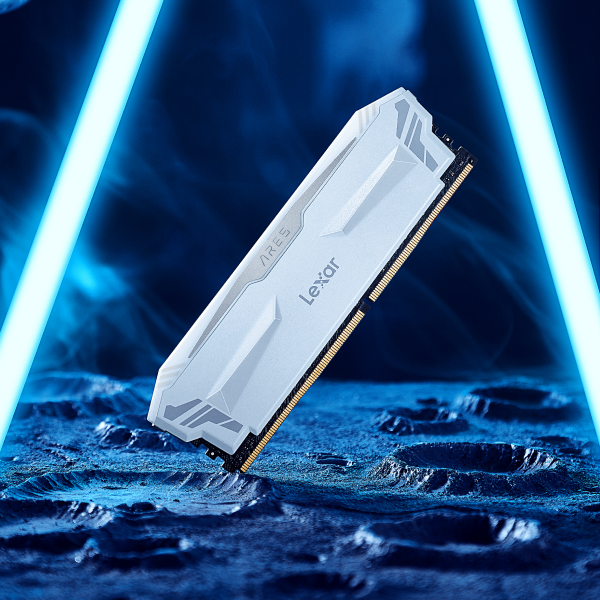
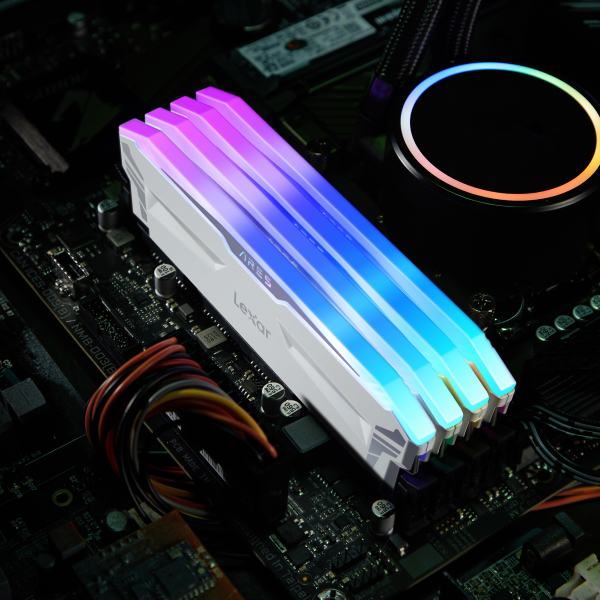
DDR4: The Old Standard
DDR4 is the old standard in most modern gaming PCs. It offers speeds ranging from 2133MHz to 3200MHz and beyond, providing a significant performance boost over its predecessors.
Our Lexar ARES DDR4 is an excellent choice for gamers looking for reliable performance. With speeds up to 4000MT/s and a 32GB kit (16GBx2), it’s designed to handle demanding games and multitasking with ease.


DDR5: The New Generation
DDR5 represents the cutting edge of RAM technology. It takes performance to new heights, with speeds starting at an impressive 4800MHz and the potential to go much higher.
For those building a future-proofed gaming rig, our Lexar ARES RGB DDR5 is a top contender. It offers blazing speeds up to 6000MT/s and supports XMP 3.0 & EXPO™ standards, allowing for easy overclocking and performance optimization.
Gaming RAM’s Impact on Performance: More Than Just Numbers
The amount and speed of RAM in your gaming PC can significantly impact its performance. But how much do you really need? Let’s break it down:
- Entry-level Gaming (8GB):
- Suitable for older or less demanding games
- Basic multitasking (game + voice chat)
- Mainstream Gaming (16GB):
- Recommended for most modern games
- Comfortable multitasking (game + browser + streaming software)
- High-end Gaming (32GB):
- Future-proof for upcoming games
- Heavy multitasking (game + video editing + multiple background apps)
- Extreme Gaming/Game Development (64GB+):
- Necessary for some simulation games or running game servers
- Simultaneous gaming and heavy content creation
Remember, these are general guidelines. Your specific needs may vary depending on the games you play and how you multitask.
RAM and Gaming Multitasking: Stream Like a Pro
One of RAM’s most noticeable impacts is on multitasking performance while gaming. When you’re running a game, streaming software, web browser, and chat applications simultaneously, each one occupies a portion of your RAM.
With sufficient RAM, you can seamlessly switch between your game and other tasks without experiencing slowdowns or frame drops. This is particularly crucial for streamers and content creators who need to run resource-intensive applications alongside their games.
The Cost of Insufficient RAM
When you run out of physical RAM during a gaming session, your system starts using virtual memory, which involves using part of your hard drive as makeshift RAM. This process, called paging, can significantly impact your gaming experience:
- Delayed load times
- Frame rate drops or stuttering
- Texture pop-in or reduced detail
- System-wide sluggishness
By ensuring you have enough RAM for your gaming needs, you can avoid these frustrating scenarios and maintain smooth, immersive gameplay.
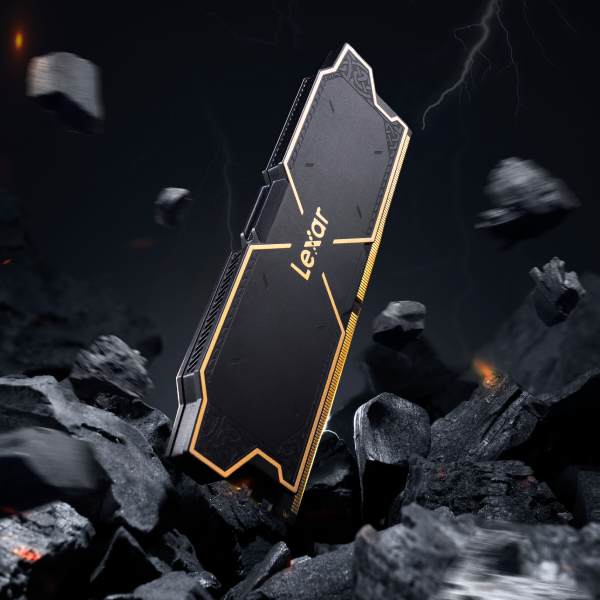

Gaming RAM Speed: The Fast and the Furious
While capacity is important, RAM speed also plays a crucial role in gaming performance. Faster RAM can improve frame rates and reduce stuttering, especially in CPU-intensive games. For example:
- A game running with 16GB of 2400 MHz RAM might average 85 FPS
- The same game with 16GB of 3200 MHz RAM could see that average jump to 93 FPS
These differences can be more pronounced in competitive games where every frame counts. For those looking to push their system to the limit, our Lexar THOR OC DDR5 offers speeds up to 6000MT/s, providing the headroom needed for high-performance gaming and overclocking enthusiasts.
Optimizing Your Gaming RAM in 5 Steps
To make the most of your gaming RAM, follow these steps:
- Close unnecessary background applications before gaming to free up memory.
- Use lightweight alternatives for resource-heavy programs when possible.
- For example, switch from Chrome (which can use 1GB+ of RAM per tab) to a gaming-optimized browser like Opera GX, which lets you set specific RAM limits for smoother gameplay.
- Adjust virtual memory settings to complement your physical RAM.
- Keep your operating system, drivers, and games updated for optimal memory management.
- Consider enabling XMP (eXtreme Memory Profile) in your BIOS to ensure your RAM runs at its advertised speeds.
Remember, modern operating systems are designed to utilize available RAM efficiently, so don’t worry if you see high RAM usage under normal gaming conditions.
The Future of Gaming RAM: What’s on the Horizon?
As games become more complex and immersive, RAM technology continues to evolve. Here are some exciting developments we’re keeping an eye on:
- Higher frequencies: We’re likely to see DDR5 modules pushing beyond 8000 MHz in the coming years.
- Increased capacity: 128GB and 256GB kits may become more common for high-end gaming rigs.
- Improved latencies: Manufacturers are working on reducing latencies even at higher speeds.
- Smart memory allocation: Future RAM might use AI to predict and preload game assets more efficiently.
These advancements promise to push the boundaries of what’s possible in gaming, from enabling more realistic physics simulations to facilitating larger, more detailed game worlds.

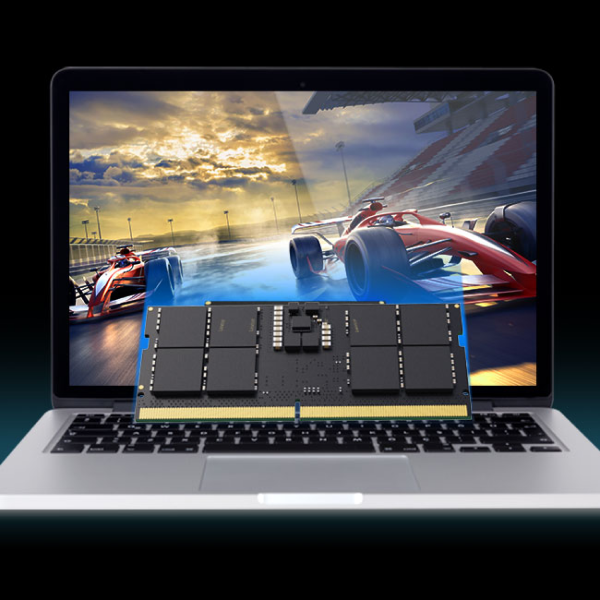
Choosing the Right Gaming RAM: A Balancing Act
Selecting the appropriate RAM for your gaming rig involves balancing several factors:
- Compatibility: Ensure the RAM is compatible with your motherboard and processor.
- Capacity: Consider your gaming habits and multitasking needs.
- Speed: Higher frequencies can improve performance, especially in CPU-bound games.
- Latency: Lower CAS latency can improve performance, particularly in conjunction with higher frequencies.
- Aesthetics: For many gamers, how the RAM looks in their build is also important.
When selecting gaming RAM, consider your specific needs:
- For mainstream gaming: Our Lexar ARES DDR4 offers reliable performance at 3600MT/s.
- For high-performance gaming: The Lexar THOR OC DDR5 pushes speeds up to 6000MT/s.
- For next-gen gaming laptops: Our Lexar DDR5 SODIMM Laptop Memory brings DDR5 technology to gaming on the go with speeds of 4800MT/s.
Remember, compatibility is key. Always check your system specifications before making a purchase.
Gaming RAM: The Unsung Hero of Your Gaming Experience
While it may not get as much attention as flashy GPUs or powerful CPUs, RAM plays a crucial role in delivering smooth, immersive gaming experiences. From enabling seamless multitasking to enhancing frame rates and reducing load times, gaming RAM is the unsung hero that keeps your virtual worlds running swiftly and efficiently.
As we continue to push the boundaries of what’s possible in gaming, the role of RAM will only grow in importance. Whether you’re a casual player, a competitive gamer, or an aspiring game developer, understanding gaming RAM can help you make informed decisions about your hardware needs.
So, the next time you’re exploring vast open worlds or engaging in intense multiplayer battles, take a moment to appreciate the silent workhorse that is your gaming RAM – the backbone of responsive, immersive gaming. By choosing the right RAM for your needs and optimizing its usage, you’re not just improving your system’s performance; you’re enhancing your entire gaming experience.



